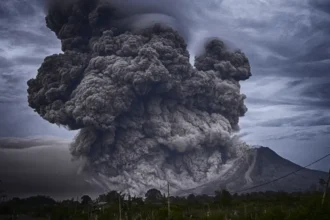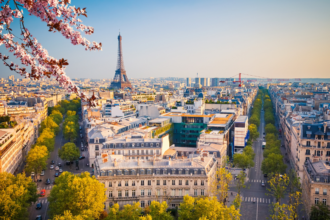Geothermal cooking is an unexpected way that tradition and geology come together on the southern coast of Italy’s Ischia Island. Ischia is mostly known for its healing hot springs, but it has a deeper history that goes back to its black sand beaches. People in this area bury their food in volcanic sand that is heated by vapors from below the surface. This is a tradition that has been going on for hundreds of years.
This custom is based on the town of Sant’Angelo and the crescent-shaped Maronti Bay. The heat from nature is all that is used to cook food. It’s not only a way for people and tourists to get around; it’s a cultural experience.
What is geothermal cooking, and how does it work?
Geothermal cooking harnesses heat from volcanic activity that happens deep beneath. In Ischia, fumaroles, which are vents that let forth volcanic gasses, heat the sand to a boiling point. Some places, like Maronti Bay, get as hot as 100°C (212°F). People in the area wrap food in foil or steel containers and bury it in the sand to cook it slowly and evenly.
What happened? Meals that taste earthy and stay moist, like sous vide cooking. Dishes including chicken, octopus, mussels, and potatoes are always popular. Here is the link to our article on Flight cancellations risks.
What makes this style of cooking unique to Ischia?
Ischia lies atop a volcanic caldera, which gives it a lot of geothermal features. There are fumaroles and hot springs all throughout the island, but the ones near Maronti Bay and Sorgeto Bay is the hottest. For generations, islanders have come to these places to cook, swim in warm water, and celebrate their culture.
Chalet Ferdinando a Mare and Ristorante Emanuela are two restaurants that still do this. They only use geothermal cooking to make their food, which gives travelers a rare chance to see and taste Ischia’s volcanic roots.
Is it safe to cook using volcanic sand?
Safety is the most important thing. If you don’t handle the sand right, it can catch fire. That’s why only skilled personnel or locals who have done it before can cook in this manner. They employ gloves, heat-resistant foil or containers, and instruments like shovels to handle the procedure. Most recipes take between 15 minutes and three hours to prepare, depending on the protein.
Tourists can safely enjoy this style by eating at restaurants that observe stringent rules for cooking and cleanliness. Geothermal chefs make sure that sand doesn’t get into the dish while keeping its original texture and flavor. Here is the link to our article on Urban travel innovation.
How has cooking with geothermal energy changed?
In the past, households used cloth to wrap food, but current hygiene requirements have led to the usage of safer materials. But the method is still true to its roots. Families still go to the beach to cook in the summer, especially around dusk, and take warm baths in the water that are created by volcanic steam.
Restaurants increasingly serve creative delicacies like calamari with onions or octopus ragù. Fine dining chefs like Nino di Costanzo at Daní Maison even use geothermal cooking methods.
What does this tradition mean for the culture?
The tradition is directly connected to the island’s mythology and history. People who live there tell stories about Typhon, a giant who is stuck under the island and whose breath powers the fumaroles. Geologists say that Ischia’s heat emanates from magma chambers that are 2.5 kilometers below the surface.
It’s likely that these ways of cooking came from Greek or Roman inhabitants who respected the land’s inherent vitality. Today, the custom is a proud sign of cultural identity and sustainability.
Final Thoughts
Ischia’s geothermal cooking shows how adaptable and creative people can be. It combines natural forces with cooking skills to turn volcanic power into food. This historic rite gives guests more than just a meal; it connects them to history, community, and the island’s volcanic heart. People in the area say that volcanoes are more than simply a danger; they are life itself.








